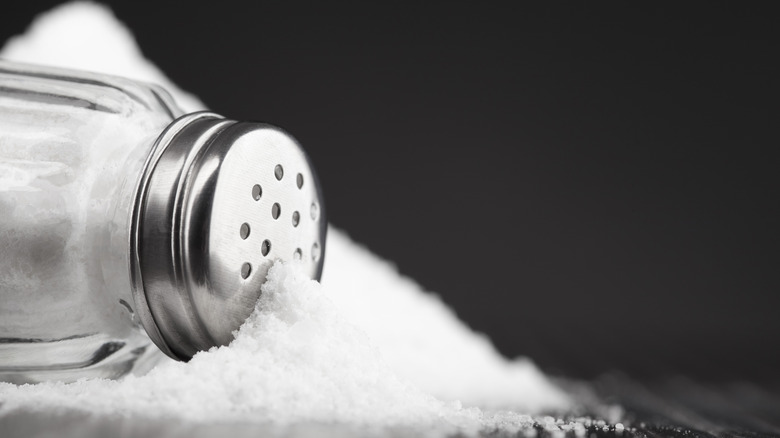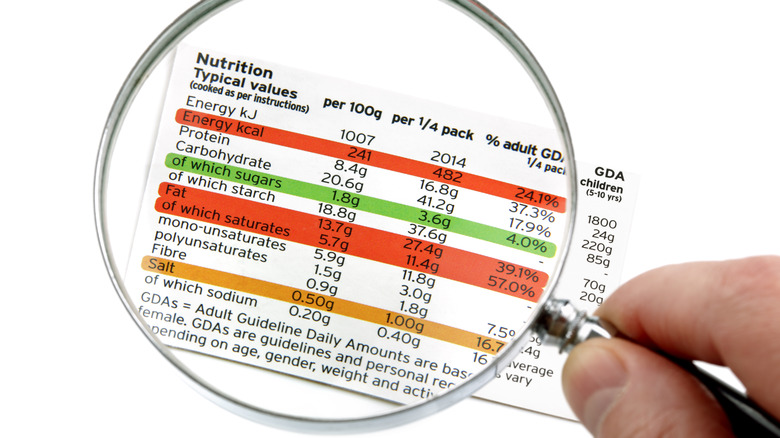How To Spot The Hidden Sodium In Your Food
Sodium may be an essential element to our survival, but most of us consume way too much. According to the Dietary Guidelines for Americans 2020-2025, Americans consume on average 3,393 milligrams of sodium a day, though the daily recommended sodium intake is just 2,300 milligrams, or about one teaspoon of table salt.
Consuming too much sodium has been linked to a number of serious health issues, including high blood pressure and an increased risk of heart disease and stroke (via CDC), not to mention uncomfortable and unsightly bloating from water retention (via Healthline). But before you decide to throw out all your shakers of table salt, sea salt, and pink Himalayan salt, you should be aware that around 75% of most dietary sodium consumption actually comes from processed foods and eating out (via Food Network). Only about 15% of sodium typically occurs naturally in food, with the remainder added during cooking and eating (via American Heart Association).
So how do we cut down on our sodium intake?
First, be aware that a lot of foods contain sodium, including ones you may not suspect. In fact, the American Heart Association's "salty six" list of the top sodium sources in the American diet includes, in order, breads and rolls, pizza, sandwiches, cold cuts and cured meats, soups, burritos and tacos. That slice of bread might not taste salty, but it can pack in quite a lot of sodium, which adds up over time.
It's also important to pay attention to nutritional labels and ingredient lists, especially since the same food products from different manufacturers can contain wildly different levels of sodium. Look for labels indicating "unsalted" (no sodium added, though there may still be naturally occurring sodium), "reduced sodium" (more than 25% reduction in sodium than naturally occurring), "low sodium" (140 milligrams per serving), "very low sodium" (35 milligrams per serving), or "sodium free (less than 5 milligrams a serving) (via University of Michigan Medicine). Also look for hidden sources of sodium in the ingredient list. A good clue is that they all contain the word sodium in their name, though they are often items that you may not associate with sodium, such as monosodium glutamate (MSG), sodium bicarbonate (baking soda), sodium benzoate, and disodium phosphate.

